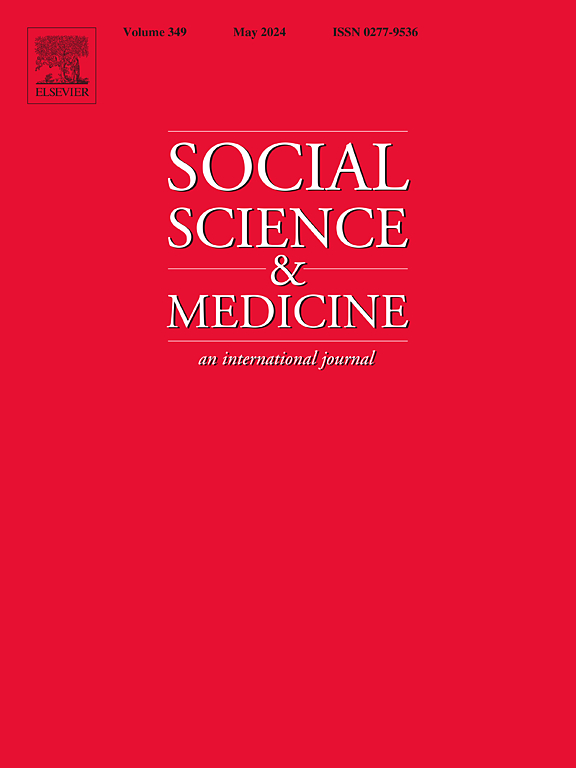The effect of cash transfers on health in high-income countries: A scoping review
IF 4.9
2区 医学
Q1 PUBLIC, ENVIRONMENTAL & OCCUPATIONAL HEALTH
引用次数: 0
Abstract
High-income countries use cash transfer programs to mitigate poverty, in part to improve the health of low-income populations and potentially reduce their use of public health care. This review synthesizes evidence from studies that employed experimental or quasi-experimental designs to evaluate the effect of cash transfer interventions on health outcomes or health care utilization in high-income countries. We excluded interventions if they required prior contributions for eligibility, substituted cash transfers for in-kind services, or were contingent on specific health behaviours, and excluded studies published before 1970. We searched 14 academic databases on May 13, 2022 and April 18, 2023, identifying 20,978 unique records. After screening, 164 studies were included. These studies covered interventions in 14 countries, with the largest share from the United States. The most common health outcomes examined were fertility, birth weight, self-rated health, tobacco use, and depression. We classified studies into seven intervention categories and eight health outcome domains, and identified where systematic reviews may be possible. We found relatively few studies examining health care utilization as an outcome and identify this as a knowledge gap. We categorized effects as beneficial or harmful, except for fertility and health care utilization where effects were categorized as increase or decrease. With insufficient consistency of outcomes for meta-analysis, we employed a vote count and sign test to assess the presence of any effect. Across the six relevant health domains, 98 of 130 studies (.75; 95% CI: .67, .82) reported a beneficial median effect, significantly different from the null value of 50% (p = .000). Of 37 studies examining fertility, 23 showed increases (.62; 95% CI: .46, .76) in fertility, which did not clear our threshold for statistical significance using conservative assumptions (p = .094). However, a larger share of studies reported increased fertility for child/family benefits (.69, n = 26) than for employment-related cash transfers (.44, n = 9). Results for health care utilization were evenly distributed (5 increase, 4 inconsistent, 6 decrease), but these are difficult to interpret as outcomes include both preventive and acute care. Our study provides replicable methods to enable future meta-analyses.
高收入国家现金转移对健康的影响:范围审查
高收入国家使用现金转移计划来减轻贫困,部分原因是为了改善低收入人群的健康状况,并可能减少他们对公共医疗服务的使用。本综述综合了采用实验或准实验设计评估高收入国家现金转移干预对健康结果或医疗保健使用的影响的研究证据。如果干预措施需要事先缴费才能获得资格、以现金转移代替实物服务或取决于特定的健康行为,我们将其排除在外,同时也排除了 1970 年以前发表的研究。我们于 2022 年 5 月 13 日和 2023 年 4 月 18 日检索了 14 个学术数据库,共识别出 20978 条唯一记录。经过筛选,共纳入 164 项研究。这些研究涉及 14 个国家的干预措施,其中来自美国的研究最多。最常见的健康结果是生育率、出生体重、自评健康、烟草使用和抑郁。我们将研究分为七类干预措施和八个健康结果领域,并确定了可能进行系统回顾的领域。我们发现将医疗保健利用率作为一项结果进行研究的相对较少,并将其视为一项知识空白。我们将效果分为有益或有害,但生育率和医疗保健利用率除外,其效果分为增加或减少。由于结果的一致性不足以进行荟萃分析,我们采用了投票计数和符号检验来评估是否存在任何影响。在六个相关的健康领域中,130 项研究中有 98 项(.75;95% CI:.67,.82)报告了有益的中位效应,与 50% 的无效值有显著差异(p = .000)。在 37 项有关生育率的研究中,有 23 项研究显示生育率有所提高(.62;95% CI:.46, .76),但根据保守假设,这些研究并未达到统计学意义的临界值(p = .094)。然而,与就业相关的现金转移(0.44,n = 9)相比,儿童/家庭福利(0.69,n = 26)的生育率提高的研究比例更大。医疗保健利用率的结果分布均匀(5 项增加,4 项不一致,6 项减少),但由于结果包括预防性和急性医疗保健,因此很难解释。我们的研究为今后的荟萃分析提供了可复制的方法。
本文章由计算机程序翻译,如有差异,请以英文原文为准。
求助全文
约1分钟内获得全文
求助全文
来源期刊

Social Science & Medicine
PUBLIC, ENVIRONMENTAL & OCCUPATIONAL HEALTH-
CiteScore
9.10
自引率
5.60%
发文量
762
审稿时长
38 days
期刊介绍:
Social Science & Medicine provides an international and interdisciplinary forum for the dissemination of social science research on health. We publish original research articles (both empirical and theoretical), reviews, position papers and commentaries on health issues, to inform current research, policy and practice in all areas of common interest to social scientists, health practitioners, and policy makers. The journal publishes material relevant to any aspect of health from a wide range of social science disciplines (anthropology, economics, epidemiology, geography, policy, psychology, and sociology), and material relevant to the social sciences from any of the professions concerned with physical and mental health, health care, clinical practice, and health policy and organization. We encourage material which is of general interest to an international readership.
 求助内容:
求助内容: 应助结果提醒方式:
应助结果提醒方式:


